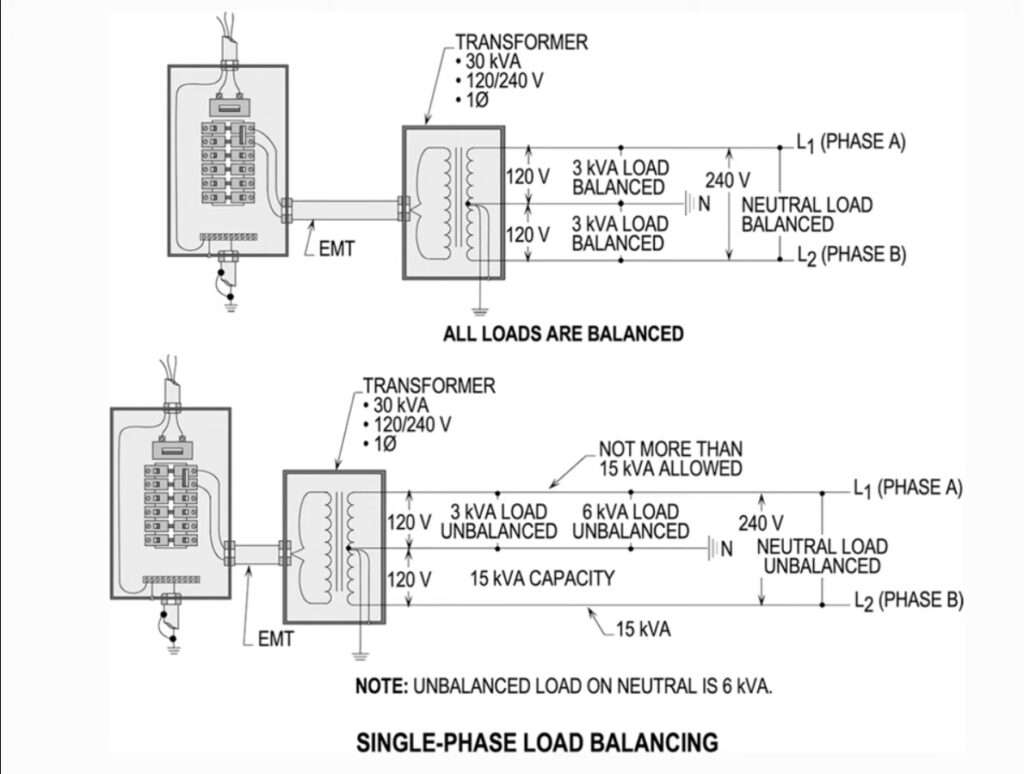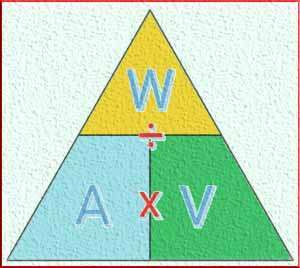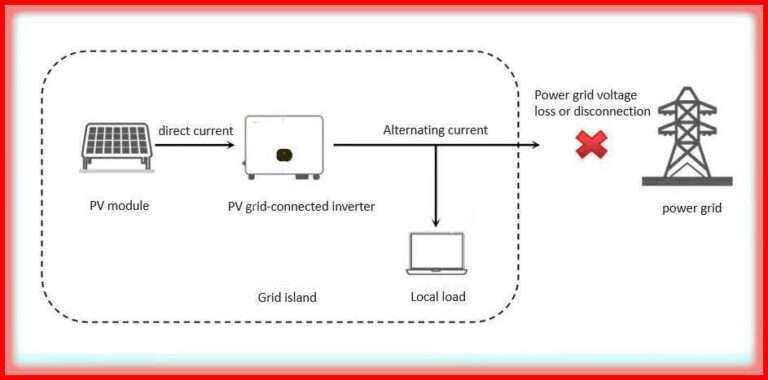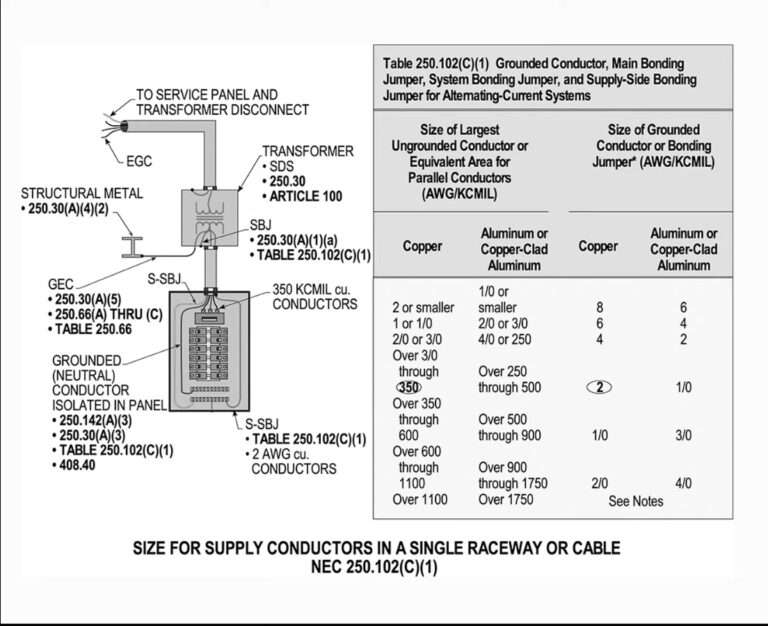Electrical Load Balancing in Single-Phase Systems
Understanding Balanced and Unbalanced Loads on the Neutral
In single-phase electrical systems, load balancing is crucial for ensuring efficiency, reducing losses, and maintaining system stability. When loads are evenly distributed between the phases, the neutral current remains minimal, leading to better performance. However, unbalanced loads can cause increased neutral currents, voltage fluctuations, and potential equipment damage.

Balanced Load Scenario
Consider a system where the loads are evenly distributed between Line 1 (L1) and Line 2 (L2). In this case:
- L1 carries a load of 3 kVA
- L2 carries a load of 3 kVA
- Neutral load remains at 0 kVA
This balanced load condition ensures minimal stress on the neutral conductor, reducing power losses and improving overall efficiency. According to NEC 220.61(A), a well-balanced system results in lower neutral currents, minimizing unnecessary heating and electrical hazards.
Unbalanced Load Scenario
Now, let’s examine a case where the loads are unbalanced:
- L1 carries a load of 3 kVA and 6 kVA, totaling 9 kVA
- L2 carries a load of 15 kVA
- The neutral carries an unbalanced load of 6 kVA
The imbalance in this system creates a higher neutral current, which can lead to overheating, inefficient power distribution, and increased voltage fluctuations. This scenario is addressed in NEC 220.6(A), which provides guidelines for managing unbalanced loads effectively.
The Role of Transformers in Load Balancing
In both cases, the system uses a 30 kVA, 120/240V three-wire single-phase transformer. The transformer’s ability to handle balanced and unbalanced loads impacts system performance. The closer we can balance these loads, the better the system operates, reducing stress on electrical components and preventing potential failures.
Impact of Unbalanced Loads on Sensitive Equipment
When dealing with sensitive electronic equipment and non-linear loads (such as computers, variable frequency drives, and LED lighting), unbalanced loads can introduce harmonics. These harmonics cause additional heating in the neutral conductor and can disrupt equipment operation. NEC 310.15(E) provides guidelines for handling these conditions to ensure a stable and safe electrical system.
Best Practices for Electrical Load Balancing in Single-Phase Systems
To minimize unbalanced loads and their negative effects, consider the following:
- Distribute loads evenly across L1 and L2.
- Monitor neutral current to detect and correct imbalances early.
- Use power quality analyzers to identify harmonics and correct power factor issues.
- Install dedicated circuits for sensitive electronic equipment to minimize interference.
By implementing these strategies, you can enhance the efficiency and longevity of your single-phase electrical system while ensuring compliance with NEC regulations.
Conclusion
Proper electrical load balancing in single-phase systems is essential for maintaining system reliability and efficiency. By understanding the effects of balanced and unbalanced loads, and following best practices for load distribution, you can optimize performance, reduce energy losses, and enhance the safety of your electrical system.
ElectricalLoadBalancing, #SinglePhaseSystems, #LoadBalancing, #PowerDistribution, #VoltageStability, #ElectricalEngineering, #SmartGrid, #EnergyEfficiency, #LoadManagement, #ElectricityOptimization, #PhaseBalancing, #PowerQuality, #ElectricalSafety, #GridStability, #ElectricLoad





